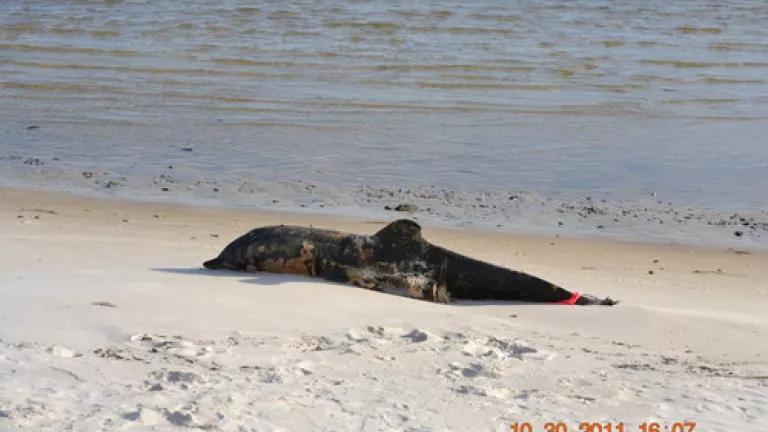
What is happening to the dolphins?
The rosy predictions that some have made since the Deepwater Horizon was plugged, in July 2010, have been belied by the sickening, relentless washing up of dead bottlenose dolphins on the beaches of the Northern Gulf.
With the spill’s second anniversary just around the corner, NRDC reviewed past dolphin strandings in the Gulf and compared them to the present one. Our conclusion is that the current die-off is simply unprecedented:
The National Oceanic and Atmospheric Administration (NOAA) began to systematically investigate “unusual mortality events” (UMEs) of marine mammals twenty years ago, after a number of highly publicized mass strandings. Since then, the Gulf’s bottlenose dolphins have gone through 11 high mortality events aside from the present ones—accounting for one-fifth of all the UMEs that NOAA has declared for marine mammals nationwide. The dolphins’ involvement in so many of these events suggests how vulnerable they are to environmental disturbance, and perhaps how likely, as coastal mammals, they are to strand. But never have the dolphins experienced a die-off that has lasted as long, involved as many animals, or afflicted as many calves.
What I find most horrible is that many of the animals stranding dead on the shoreline surely belong to the Gulf’s small, near-coastal population – tiny communities of animals that make their living so close to us, in the Gulf’s bays, sounds, and estuaries, and are probably being decimated. NOAA recently did a health assessment of one of those communities, in Barataria Bay, Louisiana, and pronounced most of the dolphins they examined “severely ill”: underweight, anemic, showing signs of lung and liver disease. These iconic animals live right off our shores; we don’t even know how many remain alive.
You can read more about the die-off in our fact sheet here.
